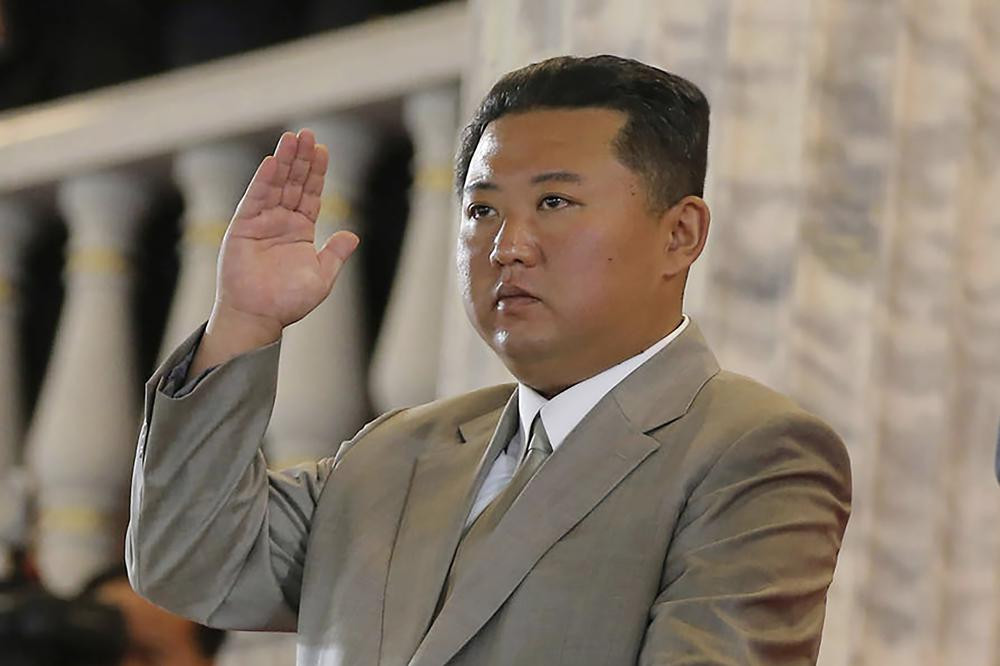North Korea’s recent sword-rattling after months of relative quiet makes clear that leader Kim Jong Un is working on expanding his weapons arsenal.
Nuclear-capable missiles hidden in trains that can be launched anywhere along a railway. A new cruise missile resembling the U.S. Tomahawk that can be potentially topped with atomic warheads. The apparent resumption of making fuel for potential nuclear bombs.
Likely they are an attempt to wrest concessions from Washington if, and when, long-stalled diplomatic talks on Kim’s nuclear program resume. Part of the message is aimed domestically, however, to reinforce internal unity as North Koreans cope with deeper hardship in a never-healthy economy that’s been battered by the coronavirus pandemic.
Here, then, is a look at Kim’s recent weapons tests, the first of their kind in six months, and what they may mean for efforts to confront the North’s nuclear ambitions.
THE NEW WEAPONS
North Korea called its first train-launched ballistic missile tests successful, saying the two weapons launched Wednesday struck a target in the sea 800 kilometers (500 miles) away.
That puts all of South Korea and the U.S. military bases it hosts in range. Experts say the missiles are nuclear-capable.
Firing from trains also adds another platform for missile launches — in addition to mobile trucks, ground pads and a submarine method still being tested. A train-based platform utilizes North Korea’s national rail network and allows for secret movement and launch, although experts note rail networks are vulnerable targets in a crisis.
For South Korea, “which has to defend itself from North Korean missiles, it’s yet another headache,” said Lee Choon Geun, a missile expert at South Korea’s Science and Technology Policy Institute.
Last weekend, North Korea also tested what it called a new cruise missile, which flew about 1,500 kilometers (930 miles), making it the North’s longest-range cruise missile, capable of reaching all of Japan, which is also home to 50,000 U.S. troops.
It’s being developed as nuclear capable and flies at a low altitude, making it harder to detect. Its development demonstrates North Korea’s push to break enemy defense lines and diversify a weapons inventory that’s heavy on ballistic missiles.
Satellite photos also show signs North Korea has restarted operations at its main factory for producing weapons-grade plutonium, a key ingredient used to make nuclear weapons.
WHAT KIM WANTS
Kim’s resumed testing activities are largely meant “for developing military capabilities, but can also be attempts at shoring up domestic unity,” said Leif-Eric Easley, associate professor of international studies at Ewha Womans University in Seoul. “Pyongyang could launch a provocation even when in desperate economic need because it wants to hide its weaknesses and extract external concessions.”
Kim may also be going back to a tried-and-true technique of pressuring the world with missile launches and outrageous threats before offering negotiations at the last minute meant to extract aid.
“It bears further watching on how things go, but it’s possible that we are near another phase in (North Korean) brinkmanship,” said Park Won-gon, a professor of North Korea studies at Ewha Womans University.
North Korea’s recent tests could be low-key reactions to the continuation of joint U.S.-South Korean military drills and to South Korean efforts to build up its arms programs.
Kim’s ultimate goal is likely winning relief from crippling international economic sanctions even as he gains U.S. recognition as a nuclear state, allowing him to hold onto nuclear weapons that he may see as his only guarantee for survival.
WHAT’S NEXT?
North Korea may keep ramping up its pressure campaign, at least until China starts pushing for calm ahead of the Beijing Olympics early next year. But it still could hold back on tests of more provocative weapons as it looks for less coercive diplomacy.
The North will have until around November to advance its weapons development with testing, Park, the analyst, said. After that, it risks hurting relations with China.
North Korea may also conduct another weapons test around a major state anniversary, like the ruling Workers’ Party foundation day on Oct. 10.
“For upgrading weapons capabilities, next in the testing queue may not be a nuclear device or ICBM but a submarine-based system,” Easley said.
Despite its recent weapons tests, North Korea has maintained a self-imposed moratorium on nuclear and long-range missile tests for more than three years. That suggests that it still wants to keep chances for future diplomacy with Washington alive.
It’s possible that Pyongyang is carefully measuring its actions while looking for a window back into diplomacy.
“It wouldn’t be surprising if the North makes some effort soon to reach out to Washington or to Seoul, if just only to measure their intent,” said Hong Min, an analyst at Seoul’s Korea Institute for National Unification.

